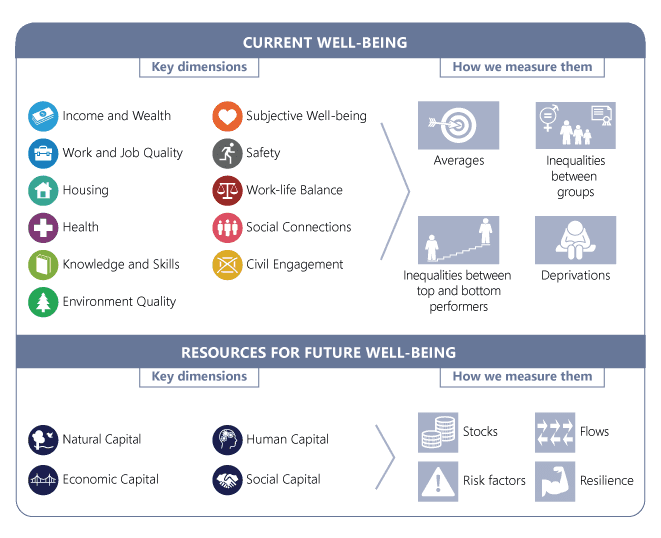Wellbeing is the state of being comfortable, healthy, and happy. As early as the third century BC, humankind has been debating how this could be achieved – how we can reach a state of Eudaimonia, as Aristotle named it – the contented state of feeling healthy, happy, and prosperous.
The overall sense of wellbeing depends on the balance of the physical, emotional or psychological, social, spiritual, intellectual, and economic state. Our built environment has a major impact on these elements, and in order for developers to invest in real estate that truly embraces wellbeing, and for designers to be able to bring these designers to fruition, the need and how to measure wellbeing needs to be understood.
The economics of wellbeing
This is not about understanding inflation in the economy and stock market. The real core in understanding economics of wellbeing is in understanding how people make trade-offs between different things and what they are interested in and whether these trade-offs maximize their wellbeing.
When developing a business case for residential real estate, Corporate Social Responsibility activities would need to be considered as well as how investments are impacting on peoples’ lives. What are the impacts on people’s wellbeing and how do we then measure that?
So, want needs to be understood is firstly what we really mean by wellbeing.
We need to take something that is ephemeral and making it truly tangible. What is wellbeing comprised of? Is it people’s emotions? Is it what they only tell us they want in life? Is it their purpose in life or there are other kind of ethical issues? We need to establish wellbeing indicators, which would differ across different economic or pocket demographic groups in the sense that wellbeing is different for an 85-year-old man compared to 20-year-old woman, for example.
The business case needs to understand whether the benefits outweigh the costs, and since the costs are always in financial terms, the key will be in relating the benefits back into financial terms as well. We will therefore need to look at two important aspects of the benefits. Taking health as an example: living a healthier lifestyle, by say cycling, will not only lessen the burden of the health system because you will need less physiotherapy, treatment, etc. but will also have a direct benefit to the individual from reduction of pain, better mobility, more self-confidence, and weight loss. All these things are important and valuable to people, which need to be assessed and quantified.
If these business cases are set up for large residential projects, both private and public projects, more information would be gathered that would lead to assessing the social value and impact on the community.
How do we measure wellbeing?
Wellbeing can be understood through the definition itself or by the drivers that bring about wellbeing that could be put in a framework which is used throughout the Organisation for Economic Co-operation and Development (OECD), and which ought to be implemented in all public and private real estate and other stakeholder decisions on the built (and unbuilt) environment.
momentary wellbeing: it is your mood in certain moments, positive or negative emotions. On the negative side, it could be frustration, anxiety, fear. On the positive side it could be joy, relaxation, happiness, for example.
eudemonic wellbeing: the purpose that people derive out of the things that they do – the worthwhileness.
evaluative measure of wellbeing: This is more of the comparative sort of approach on how you are feeling, and how well your life is going compared to your goals, compared to your peers, compared to your aspirations, etc.

Source: https://www.oecd.org/statistics/measuring-well-being-and-progress.htm
A focus on the evaluative measure
Within this driver there are questions such as life satisfaction, crime, autonomy, the environment, health, and so on. These questions are usually measured on a scale, verbal or numerical and this data could be used to get an understanding of their wellbeing as objective measures in understanding how they impact on people, mood, purpose, and life satisfaction. Within the built environment, there needs to be a focus on the external things: connections, autonomy, control, the aesthetics of the building and the potential impact on crime. It also delves into things like the value of something's existence – for what used to be. In the built environment this would be the heritage properties. People place a value on that property existence, and even if they never see it in their life or they never actually go there, they would still value it because it impacts on their wellbeing and their sense of wellbeing.
People at the centre
To be able to achieve a truly sustainable and resilient real estate project, which ties in with the community and the society of that part of the city, in that culture, we need to consider more than the just the bottom line – the hard numbers and metrics of financial profit. The soft metrics of understand what the people really need is paramount. Which is why projects need to be designed for the people that will be using them. Early involvement of the end users of the space will make the process more complete by putting their wellbeing at the centre of all decisions.
